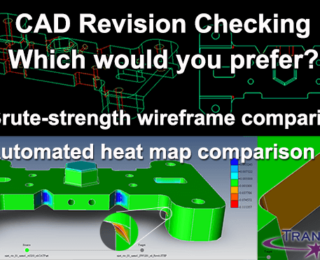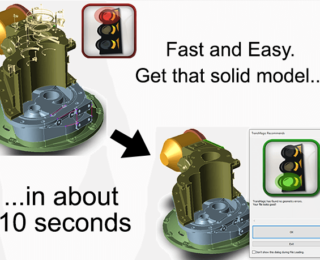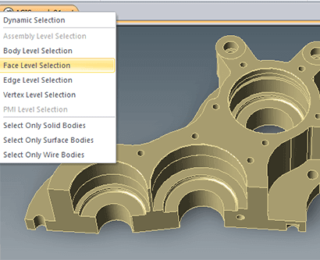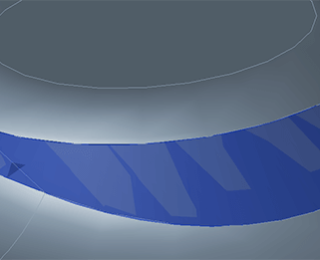TransMagic Blog
The TransMagic blog focuses on
Blog List and Blog Index
If you can’t find the blog you’re looking for, please check out our Blog List, which lists out each blog by title in chronological order, or try our Blog Index, which sorts blogs based on subject category.
If there’s a topic you’d like to see here, let us know! Reach us at social@transmagic.com.

Revision Checking – Brute Strength vs Automation
When checking customer revisions, if you miss a change, there is the potential to order wrong parts and even manufacture wrong parts. I sometimes ask TransMagic users how often their customers make changes that are undocumented; one said "oh, about 85% of the time";...

A Classic CAD Repair Scenario
Imagine that you have a part or assembly that is difficult to repair; what you're after is a watertight solid. Here's a classic repair scenario that demonstrates the use of different selection modes in the context of a repair situation. The main purpose of this...

Selection Options
Choosing Your Selection Options At first glance, it looks as if there are only four geometry selection options in TransMagic - Single Select, denoted by an arrow, Window Select, denoted by a rectangle, Select All Entities and Deselect All Entities (see screenshot at...

Three Alternatives to IGES
In Six Reasons to Avoid IGES Files, we made the case that IGES, at 20 years old, is no longer an optimal format for manufacturing. In this article we’ll look at three categories of format that have proven success in manufacturing. The best alternatives to IGES, in...

Six Reasons to Avoid IGES Files
The IGES file has been the bane of the CAD/CAM/CAE world for years, yet it remains with us to this day. This article defines some of the problems with the IGES format. A follow-up article will propose some alternative formats which are better equipped to handle most...

Optimize and Save Your Settings!
Taking the time to optimize and save your settings can make a huge difference in performance; they can determine how much work is necessary on a part or assembly, whether you are working in inches or millimeters, how fast files will open (based on whether you are...

Dealing with Duplicate Surfaces
Duplicate Surfaces are a Problem Certain processes can cause CAD models to have duplicate surfaces or faces. This can create problems when it comes time to translate, repair or otherwise use the model downstream; it's hard to stitch two sets of surfaces into a...
Dude, Where’s My CAD Data? Part 3
Last week’s article on missing CAD data discussed how to know what version of a CAD file you have, and how to know if your translation software is out of date. This week’s post will look at some further issues that can arise; entities such as points can be...

Dude, Where’s My CAD Data? Part 2
In Dude, Where's My CAD Data Part 1 we looked at some of the more common causes for missing CAD data. These included empty assemblies, missing PMI, data that was turned off in the first place, data which is present but off the screen, and data that is present, yet...

Dude, where’s my CAD Data? Part 1
It's not that uncommon an experience that we open a CAD part or assembly file, only to find that part or all of the data appears to be missing. What could be the reason for it, and what can we do about it? This article, and the followup article next week, will attempt...
Request a 7-Day TransMagic Evaluation
Evaluate TransMagic for 7 days to see how it works with your parts!
Subscribe to Newsletter
Never miss a newsletter or a special offer from TransMagic!
